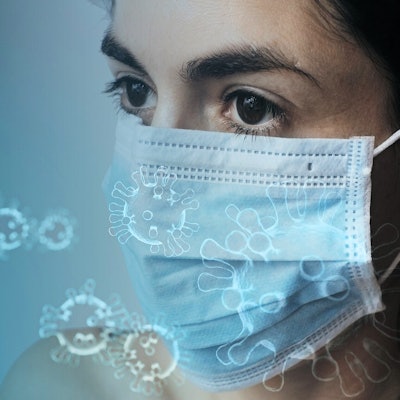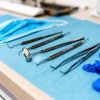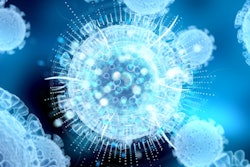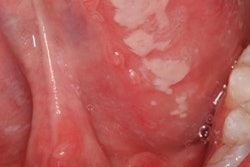
The mouth is a strong site for infection and transmission of the novel coronavirus, according to a study published October 27 on the preprint server medRxiv. Researchers believe this is the first study to show the oral cavity as a main site for SARS-CoV-2 spread.
Sloughed thin tissues from the oral cavity, specifically the salivary glands, tonsils, and tongue, can be infected by SARS-CoV-2 and a play a role in symptomatic and asymptomatic transmission via breathing, talking, and coughing. The findings highlight the importance of wearing masks and maintaining social distancing among dental teams and patients, according to the authors. However, the research has not been evaluated and certified by peer review and should not currently be used to guide clinical practice.
"The oral cavity represents a robust site for COVID-19 infection and implicates saliva in viral transmission," wrote the group, led by Dr. Blake Warner, PhD, from the National Institute of Dental and Craniofacial Research at the National Institutes of Health and Dr. Kevin Byrd, PhD, from the ADA Science & Research Institute.
Still learning
Roughly eight months have passed since the pandemic infiltrated the U.S., and there appears to be a new wave of cases in some states. Scientists continue to piece together a better understanding of the novel coronavirus that, to date, has led to approximately 227,000 deaths in the U.S.
A recent systematic review including more than 10,000 COVID-19-positive patients revealed that about 45% of all cases involved oral manifestations, according to the authors. Researchers have also reported that oral symptoms such as taste loss, dry mouth, and mucosal blistering occur in the majority of COVID-19 patients, but little is known about the mouth's involvement in SARS-CoV-2 infection and transmission, they noted.
It is unclear whether SARS-CoV-2 can infect and replicate widely in tissues of the oral cavity. However, a better understanding of whether the mouth is a site of early infection could shed light on its role in transmitting the virus intermucosally to the lungs or gastrointestinal tract via saliva.
Warner, Byrd, and colleagues used the first integrated human oral single-cell RNA sequencing atlases to predict cellular sources that were susceptible to SARS-CoV-2 infection, they wrote. In situ hybridization was then used on autopsy and outpatient samples to confirm angiotensin-converting enzyme 2 (ACE2) and transmembrane protease, serine 2 (TMPRSS2) expression to epithelia of the salivary glands and the oral mucosa and oropharyngeal mucosa. SARS-CoV-2 uses the host entry factors ACE2 and TMPRSS2 to invade cells, they noted.
SARS-CoV-2 vs. oral cavity
Sloughed epithelial cells lining the mouth can be infected with SARS-CoV-2, and the viral load in a patient's saliva correlated positively with taste and smell changes, according to preliminary results from a clinical trial of 40 people diagnosed with COVID-19, the authors reported.
The virus likely infects the salivary glands, tonsils, and tongue most because they have the highest levels of ACE2. In addition, the research shows saliva's role in COVID-19. In the salivary glands, the novel coronavirus can replicate and potentially lead to prolonged disease when infected saliva is swallowed and travels through the gastrointestinal tract or is breathed into the lungs, where it can cause pneumonia.
Small kink
The authors did note a limitation to their sequencing approach, in that the cellular representation of the mucosal atlas enriched for immune cells over suprabasal squamous epithelial cells. Compared with the salivary glands, the "results suggested that SARS-CoV-2 would have relatively little tropism for the mucosa based on the low expression and abundance of cells expressing ACE2 and TMPRRS2," they wrote.
However, integrated pan-oral mouse single-cell data showed a more robust description of the oral cavity due to higher numbers of suprabasal cells from the tongue and buccal mucosa, the authors added. These had higher levels of ACE2 and TMPRRS2 expression compared to basal epithelial cells.
Face coverings and distance
These findings further support public health measures such as wearing masks to curb the spread of COVID-19, they noted.
"These data provide a useful approach to predict viral susceptibilities in the oral cavity, demonstrate SARS-CoV-2 infection of oral and oropharyngeal niches, and illustrate the potential for both intermucosal and extraoral transmission of COVID-19 through oral secretions," the authors wrote.
Additionally, the Oral and Craniofacial Biological Network has been created as part of the Human Cell Atlas as a result of this work. The network aims to create comprehensive maps of oral and craniofacial cells to better understand oral health and diseases, according to a press release issued by the University of North Carolina at Chapel Hill.




















